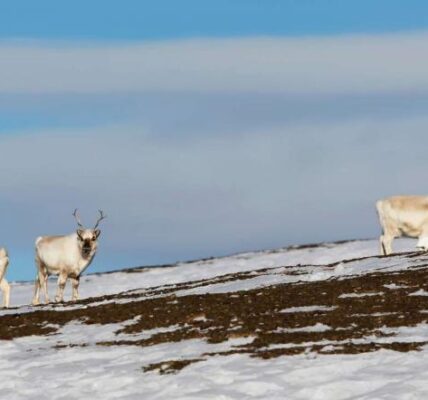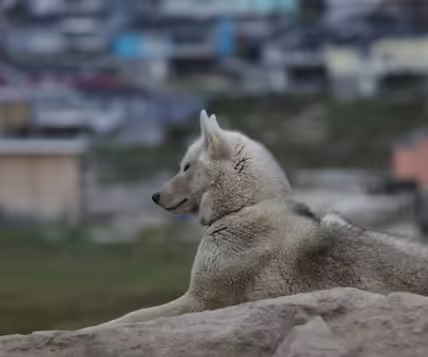Conservation of ecological systems in the Arctic and the prospects for developing specially protected natural areas were discussed at the session “The Russian Arctic – Focal point. Protected Areas in the 21st Century” held during the St. Petersburg International Economic Forum. The event was part of Russia’s chairmanship of the Arctic Council in 2021-2023, the operator of the chairmanship events being the Roscongress Foundation.
“It is important to develop a comprehensive line of action for integrating economic operators, their responsible ESG practices and the role of the regions. If we really do build such a concept, we will be able to ensure truly sustainable development of the Arctic region, balancing the economic, environmental and social agenda. It is also crucial to provide for international cooperation in this area,” said Nikolay Korchunov, Ambassador-at-Large of the Ministry of Foreign Affairs of the Russian Federation and Chair of the Senior Arctic Officials.
He pointed to the unique role of Russia’s Arctic regions in conserving biodiversity across the Arctic, hoping that the SPIEF session would trigger broader discussion of regional efforts to conserve biodiversity with a view to sharing best practices and recommendations for collaboration with economic operators.
“We talk a lot about economic development, which is, indeed crucial for success. But every effort must be made to find a balance between economic development and biodiversity conservation. Practices already developed and proven to be effective, such as in the Murmansk Region, must be rolled out to neighbouring regions. It is also vital to study global tourism development practices: the maximum recreational capacity and permissible recreational load for a territory must be calculated,” emphasized Vyacheslav Fetisov, State Duma Deputy and UN Goodwill Ambassador for Russia.
Irina Makanova, Director of State Policy and Regulation Department for Development of Specially Protected Natural Areas in the Ministry of Natural Resources and Environment of the Russian Federation, pinpointed transport accessibility, elimination of accumulated damage, and recruitment of new staff into the industry as the key challenges for further developing protected areas in the Arctic.
“Since 2018, when the ‘Conservation of Biodiversity and Development of Ecotourism’ federal project was adopted as part of the Ecology national project following the Presidential Decree ‘On Strategic Goals and Targets in the Arctic’, we have established three specially protected natural areas covering around 10 million hectares. Today, the forty protected areas in the Arctic account for half of all federal protected areas, representing the most effective mechanism for conserving Arctic biodiversity,” Makanova explained.
Also participating in the session were Dmitry Artyukhov, Governor of the Yamalo-Nenets Autonomous District, Olga Kuznetsova, Deputy Governor of the Murmansk Region, Andrey Grachev, Vice-President for Federal and Regional Programmes at Norilsk Nickel, Alexander Kirilov, Director of the Russian Arctic National Park, Bogdan Bulychev, traveller, blogger and producer, and Glenn Diesen, Professor at the University of South-Eastern Norway.
The session “The Russian Arctic – Focal point. Protected Areas in the 21st Century” was held at the stand of the Russian Ministry for the Development of the Far East and the Arctic during the SPIEF. The stand’s business programme featured around 15 events, some being held as part of Russia’s Chairmanship of the Arctic Council. These include the discussions “The Northern Sea Route. Outcomes and Plans”, “Protecting and Monitoring Arctic Biodiversity” and “Film-Making in the Arctic: Dialogue Between Nature and Technology.”





Good to see this post. Nature forever!
Norilsk Nickel = Death for the Natives
You have some really great post. But No Ecotourism! Not in my backyard )
Russia’s chairmanship of the Arctic Council is never come back )
Thanks for the post. But Russia’s Arctic never win
It’s important for all stakeholders to work together towards responsible and sustainable practices in this fragile region. Let’s continue to prioritize the protection of Arctic areas for future generations.
The importance of finding a balance between economic development and environmental conservation was emphasized, paving the way for meaningful and impactful solutions.
It’s important to prioritize environmental conservation while also considering economic growth in these fragile regions. Looking forward to seeing more initiatives and collaborations in this area.
I love hearing about sustainable development in the Arctic. It’s important to preserve such a unique environment.
Sustainable development in protected Arctic areas is definitely a step in the right direction. Let’s keep pushing for positive change.
Hey, it’s awesome to see more conversations about sustainable development in the Arctic! We really need to protect those beautiful landscapes while finding ways to live in harmony with nature.
Totally agree! The Arctic is such a unique place, and we should definitely be looking for sustainable ways to develop it. Can’t wait to see how innovation can help preserve its beauty!
Sustainable development in the Arctic? Yes, please! It’s all about finding that balance between progress and preservation. Let’s keep pushing for eco-friendly solutions up north!
I love that people are starting to pay attention to sustainable practices in the Arctic! It’s super important for future generations. Let’s keep the convo going and share some cool ideas!
The Arctic is like our planet’s fridge – let’s not mess it up! Sustainable development is key if we want to enjoy its wonders for years to come. Cheers to green solutions!
The imperative for sustainable development in Arctic regions cannot be overstated. As we strive to balance economic growth with environmental preservation, it is crucial to implement policies that protect the unique ecosystems of the Arctic while fostering responsible resource management.
I appreciate the focus on sustainable development in Arctic areas. It’s crucial that we balance economic growth with environmental protection. Implementing more renewable energy sources could significantly benefit these fragile ecosystems.
Great insights on sustainable development in the Arctic! I believe it’s essential to involve local communities in the decision-making process to ensure that their needs and knowledge are respected and integrated into development plans.
Your points about sustainable practices in Arctic regions are well-taken. However, I think more emphasis should be placed on research and monitoring to assess the long-term impacts of development projects on wildlife and indigenous cultures.
This is a solid foundation for discussing sustainable development in Arctic areas. It might be beneficial to explore partnerships with NGOs focused on conservation, as they can provide valuable expertise and resources.
I commend your approach to sustainable development in the Arctic, but I would suggest incorporating more specific examples of successful initiatives from other regions that could be adapted to fit the unique challenges of the Arctic environment.
This topic is so important, and I appreciate everyone’s contributions! Sustainable development in Arctic areas requires a collective effort—let’s brainstorm ways to enhance cooperation between governments, NGOs, and local populations to ensure a balanced approach to conservation and community needs.
It’s inspiring to see so many passionate voices coming together for sustainable development in Arctic areas! Collaboration among scientists, indigenous communities, and policymakers is crucial for finding solutions that respect both the environment and local cultures. Let’s keep sharing ideas and best practices!